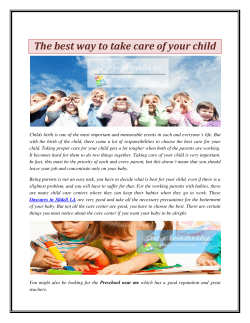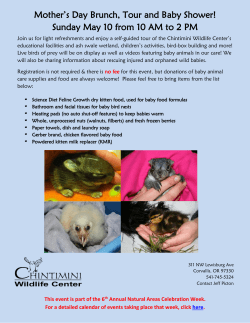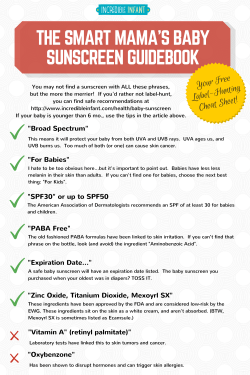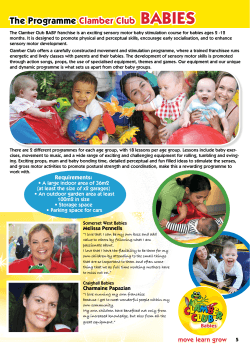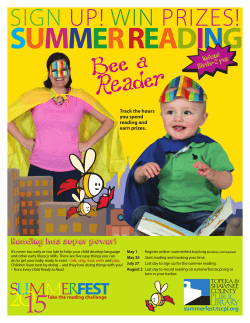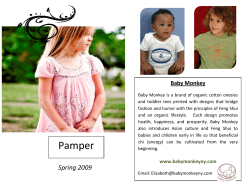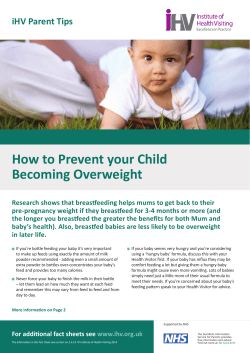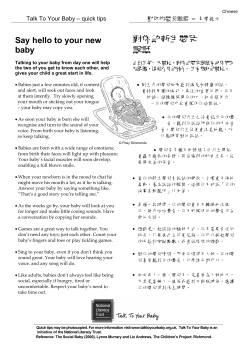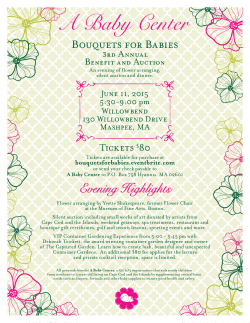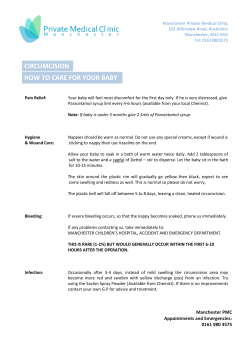
Session 6 Using your hand to bridge communication
4/28/2015 Using Your Hands to Bridge the Communication Gap Elizabeth Seeliger, Au.D. Connie Stevens, M.A. Circles of Life April 30, 2015 Overview Learner objectives Learn basic communication development characteristics for early recognition of red flags. Articulate how early relationships impact communication development in infants and toddlers Use basic sign language with early concepts such as nouns, verbs and feeling words to bridge communication. 1 4/28/2015 Overview http://www.parentingcounts.org/information/timeline/talking-with-infants Communication Develops in the Context of a Relationship: Mutual Regard 2 4/28/2015 Communication Develops in the Context of a Relationship: Mutual Gaze Communication Develops in the Context of a Relationship: Joint Attention 8 weeks: an infant follows an object with his or her eyes 4 months: an infant follows the mother’s eye-gaze towards an object Joint attention = paying attention to the same thing, mutual interest Indicates that children understand other people’s intentions. You can only obtain joint attention when you are in a relationship with another person. Children learn better under child initiated“joint-attention” circumstances. 3 4/28/2015 Communication Develops in the Context of a Relationship: Early Communication The preverbal gestures babies make are purposeful. Back-and-forth games between parent and baby form the basis of communication (and attachment, social/emotional development, etc.). Greenspan, 1999 Communication Develops in the Context of a Relationship Babies without consistent or responsive two-way communicative experiences: Can become more passive, less organized or less emotionally expressive. Learn that their attempts to communicate and be understood are futile. Babies with consistent, responsive two-way communication: Learn that their actions and feelings have an impact on their parent. Learn they are part of a relationship with their parent. Develop mutual caring. Greenspan, 1999 4 4/28/2015 Building the Bridge Sign can: language Reduce frustration. Facilitate positive behaviors. Support expressive language. Enhance parentinfant bond. Sign language cannot create baby “supergeniuses.” 5 4/28/2015 Learning Basic Signs: Activity So What Can You Do? 6 4/28/2015 You can: Set realistic expectations. Feel free to start signing with children at any age, but remember most children aren’t able to produce signs until about 8 months of age. Keep signs simple. Start with signs that describe routine requests, activities, objects and feelings, but don’t stop there. Make it interactive and playful. Try holding baby on your lap with her or his back to your stomach. Embrace the baby’s arms and hands to make the sign or sign on the baby’s body. To give signs context, try signing while bathing, diapering or feeding. Pair signs with verbalizations. Keep calm and carry on. Stay patient. Don’t get discouraged if the child uses signs incorrectly or doesn’t start using them right away. The goal is improved communication and reduced frustration, not perfection. Take Home Communication emerges in infancy in the context of a relationship with a primary caregiver. The quality of the social bond between a primary caregiver and a young child has an impact on the child’s communication development. Gestural communication is a naturally occurring developmental behavior. Sign language is a natural bridge to aid in communication development for children who struggle with expressive language. 7 4/28/2015 Resources Online: Aslpro.com Lifeprint.com Aslnook.com Spreadthesign.com: many different world sign languages, choose American Products: www.harriscomm.com: catalog of videos/books www.dawnsignpress.com: “Signs for Me” book www.dawnsign.com/signlanguage-childrens-seriesset Courses/curriculum: Signingonline.com: course Baby Signs: www.babysignstoo.com Signing Time: www.signingtime.com 8
© Copyright 2025
